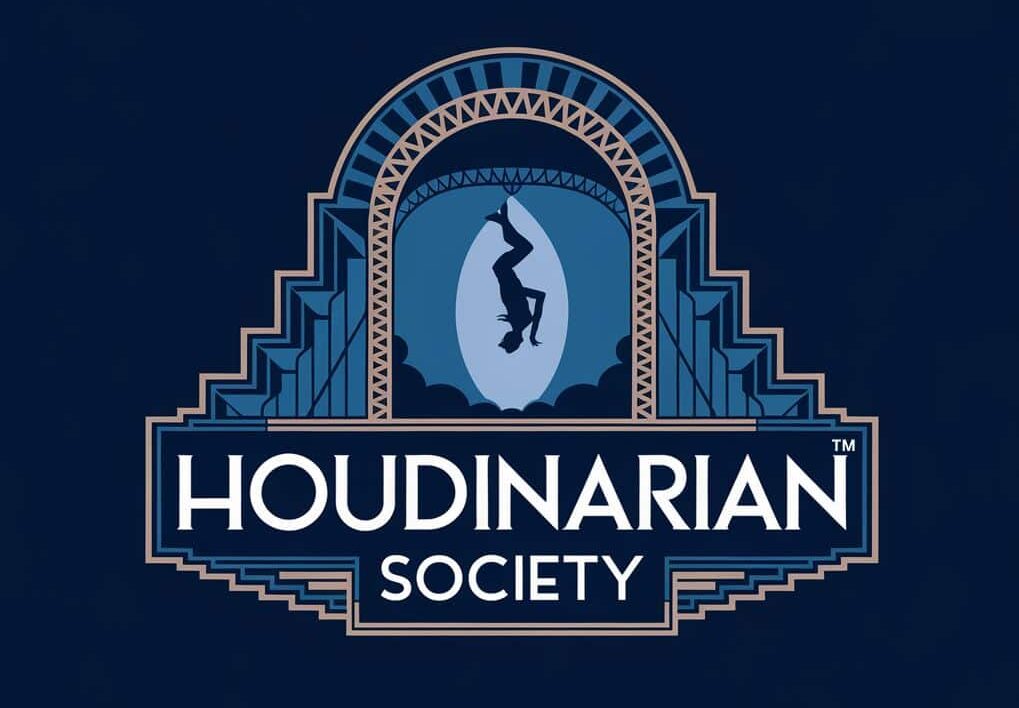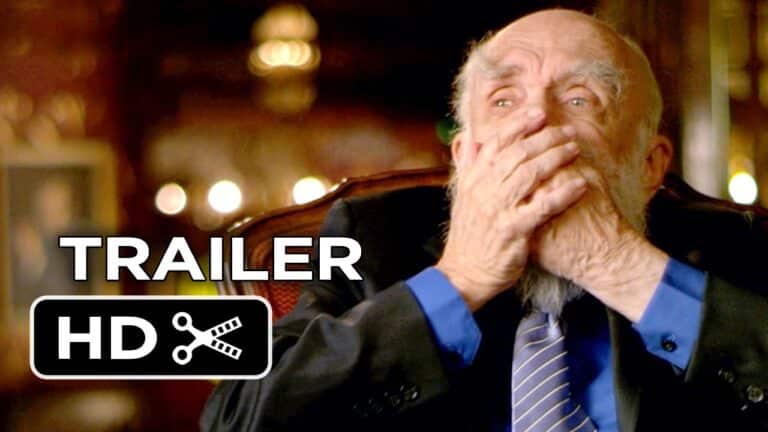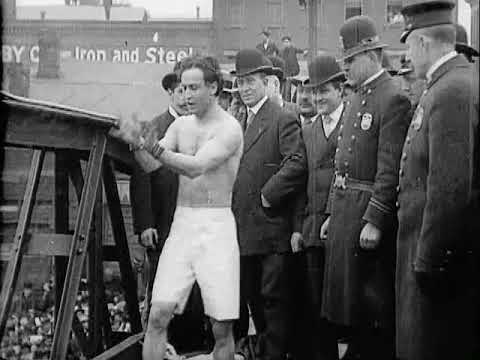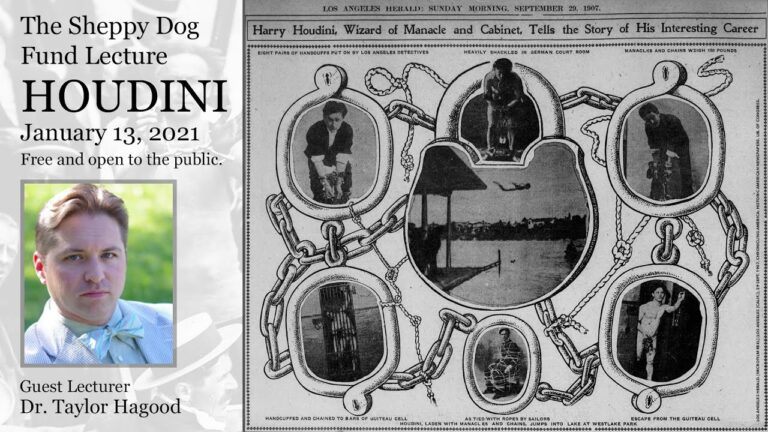The Right Way To Do Wrong: A Comprehensive Analysis of Houdini’s Deception Manual
Harry Houdini, the legendary escape artist, ventured beyond his usual stagecraft into the realm of criminal exposé with his 1906 book “The Right Way To Do Wrong.”
This fascinating collection reveals the secretive methods of con artists, thieves, and swindlers while serving as both entertainment and public service.
You’ll find Houdini’s unique perspective particularly valuable as he uses his intimate knowledge of deception to unmask fraudulent techniques.
The book offers a delightful glimpse into criminal enterprises of the early 20th century through short stories and essays.
You might be surprised by how some of these confidence tricks and scams described by Houdini continue to exist today, albeit in modernized forms.
While reading his exposé of successful criminals, you’ll appreciate Houdini’s apparent aim to educate the public against falling victim to various schemes rather than providing a how-to guide for aspiring wrongdoers.
Though more of a novelty book by today’s standards, Houdini’s work provides you with delightful stories that showcase his lesser-known talents as a writer and investigator.
You’ll discover that the master escape artist applied the same analytical mind that freed him from chains and locked chambers to understanding the criminal mindset, resulting in an in-depth analysis that remains engaging over a century later.
Harry Houdini: The Man Behind the Mystique

Harry Houdini remains one of history’s most captivating figures, whose legacy extends far beyond his famous escapes. His transformation from stage performer to author and exposer of frauds reveals the complexity of a man constantly reinventing himself.
Early Life and Career
Born Erik Weisz in Budapest in 1874, the man who would become Harry Houdini immigrated to America as a child.
You might be surprised to learn he began performing magic at just nine years old, calling himself “Prince of the Air.” His early career was marked by struggle and determination, performing in dime museums and sideshows.
With his wife Bess Houdini at his side as his stage assistant, he gradually built his reputation.
By the early 1900s, he had perfected his craft as an escape artist, challenging police departments worldwide to restrain him in their most secure handcuffs and cells.
His most famous stunts included the Chinese Water Torture Cell and buried alive escapes.
These death-defying performances weren’t merely tricks—they demonstrated his exceptional physical conditioning, understanding of locks, and psychological mastery of audiences.
Transition to Expose Author
As Houdini’s fame grew, so did his interest in exposing fraudulent practices.
In 1906, he published “The Right Way to Do Wrong,” a unique collection that revealed criminal methods gathered from his interviews with police and criminals alike.
This book marked a significant shift in his career. You can see his evolution from pure entertainer to a crusader against deception.
His writing combined humor and verve while detailing techniques of burglars, pickpockets, and fraudsters.
Houdini’s motivation stemmed partly from protecting the public and partly from distinguishing legitimate stage magic from fraudulent claims of supernatural abilities.
He became particularly focused on debunking spiritualists who claimed to communicate with the dead, a mission that continues among magicians today.
This literary work showcased a different side of Houdini—methodical, investigative, and committed to truth despite his career built on illusion.
Unveiling the Underworld: The Substance of the Book

Houdini’s unique selection of writings reveals the secrets behind criminal operations with meticulous attention to detail. His investigations expose both the psychological and technical aspects of deception that criminals employ.
Exposé of the Criminal Mind
In The Right Way to Do Wrong, Houdini documents his extensive interviews with professional criminals and law enforcement officials.
You’ll find first-hand accounts of how burglars assess potential targets and plan their operations.
The book details how criminals develop their craft through observation and practice.
Houdini reveals that many thieves possess an intuitive understanding of human psychology, allowing them to identify vulnerable victims.
What makes this work particularly valuable is Houdini’s analysis of criminal motivation.
He explores how economic necessity combines with opportunity to create successful criminals.
Houdini doesn’t romanticize these figures but presents them as craftsmen of deception. His neutral examination of their methods serves as both warning to potential victims and fascinating anthropological study.
Anatomy of Swindles and Hoaxes
Bunco men and con artists receive special attention in Houdini’s exploration.
You’ll discover the elaborate schemes designed to separate unwary people from their money.
Houdini categorizes various types of swindles, from simple street hustles to complex investment frauds.
His descriptions include the specific language and misdirection techniques that con artists employ.
The book provides remarkable details about the working secrets of humbugs and frauds that were prevalent in the early 1900s. Some schemes described remain recognizable today.
What’s particularly striking is how Houdini reveals the theatrical aspects of successful cons. The confidence man, like the magician, creates an illusion that the victim willingly participates in.
Art of Deception: Pickpockets and Burglars

Houdini’s fascinating exposé reveals the hidden world of professional thieves and their cunning methods. His book examines the psychology and techniques of those who make deception their trade.
Techniques Revealed
Pickpockets, as Houdini explains, rely on distraction as their primary tool.
They create a moment of confusion—a slight bump, a dropped item, or an artificial crowd surge—while their nimble fingers do the work.
Most operate in teams, with one member causing the distraction while another extracts valuables.
Their training is surprisingly rigorous, often practicing on mannequins equipped with bells to perfect their touch.
Professional burglars, unlike their portrayal in fiction, rarely use dramatic methods.
They prefer systematic approaches, studying targets thoroughly before attempting entry.
They look for:
- Routine patterns of occupants
- Vulnerabilities in security systems
- Quick escape routes
Many burglars specialize in specific types of theft, becoming experts in particular security systems or building designs.
Protection Against Thievery
You can defend yourself from pickpockets by maintaining situational awareness in crowded places. Houdini advises keeping valuables in front pockets or inside jacket pockets rather than back pockets.
When in crowds, be wary of:
- Unusual jostling or physical contact
- Staged distractions like arguments or falls
- People who stand unnecessarily close
For home protection, vary your routine to make your patterns less predictable. Install visible security measures as deterrents.
The most effective defense is knowledge itself.
Understanding thief methodology, as Houdini demonstrates throughout his captivating blend of true crime stories, gives you the power to recognize potential threats before they develop.
Simple changes in behavior can significantly reduce your risk of becoming a victim of these skilled practitioners of deception.
Moral Ambiguity: The Fair Criminal
Houdini’s exploration of criminal methods reveals a fascinating paradox – the notion of the “fair criminal” who operates within an unwritten code of conduct. This concept challenges our traditional view of right and wrong while exposing the complex moral landscape that exists within criminal enterprises.
Definition and Perception
The “fair criminal” represents a peculiar contradiction in Houdini’s writings. Even in the underworld, certain standards of behavior exist. These individuals engage in criminal art forms like pick-pocketing or confidence schemes, yet adhere to self-imposed rules.
Unlike random acts of violence, fair criminals prefer calculated, almost artistic approaches to thievery. They pride themselves on skill rather than brutality. Their victims are often chosen strategically. They target those who can afford the loss or individuals already engaged in dishonest activities themselves.
This ethical flexibility creates a strange moral economy where certain forms of cheating are deemed more acceptable than others. You might notice Houdini’s fascination with this distinction throughout his exposé.
Houdini’s Perspective
Houdini maintained a complex stance toward these “fair criminals.” While he hoped to warn people away from crime, his detailed interviews with criminals and police officers reveal a certain professional respect for their methods.
As a master of illusion himself, you can sense Houdini’s appreciation for the technical skill involved in certain criminal enterprises. He recognizes the thin line between stage deception and criminal trickery.
Yet Houdini never glorifies these activities. His work serves as both a cautionary tale and a practical guide to protect yourself from becoming a victim. Through his unique collection of writings, you gain insight into how these criminals justify their actions through their personal moral codes.
Houdini’s Tales of Beguilement
In “The Right Way to Do Wrong,” Houdini reveals the intricate methods criminals use to deceive unsuspecting victims. His detailed accounts expose the psychological tactics and elaborate schemes employed by con artists across Europe and America.
Begging Letter Swindlers
Begging letter swindlers operate with remarkable psychological insight. These criminals craft heartbreaking stories designed to appeal to your compassion and generosity. Houdini exposes these successful criminals with precision.
These swindlers maintain extensive records of potential victims, particularly targeting wealthy individuals known for charitable giving. Their letters often claim dire circumstances: impending evictions, sick children, or recently deceased spouses.
What makes them effective is their research. They learn personal details about you before writing, making their pleas seem uniquely relevant to your situation or interests.
They frequently include small tokens or mementos to establish credibility and emotional connection. Houdini warns that many operate in networks, sharing successful techniques and lists of generous donors.
Bogus Treasures
The bogus treasure scheme remains one of history’s most enduring swindles. You’ll find these cons particularly fascinating as they play on your desire for unexpected wealth and adventure. Houdini reveals the working secrets behind these elaborate deceptions.
The typical scenario involves a stranger approaching with a tale of hidden treasure:
- An ancient map discovered in unusual circumstances
- A dying man’s confession about hidden wealth
- A secret family inheritance that requires investment to recover
The swindler presents convincing evidence: aged documents, authentic-looking maps, or even small samples of gold or jewelry. You’re asked to provide funds for excavation, bribes, or legal fees to claim the larger treasure.
Houdini notes that these schemes succeed because they create a perfect illusion of legitimacy while appealing to both greed and the excitement of discovery. The victims willingly hand over money, believing they’ll receive much more in return.
Famous Swindles in Paris
Paris earned notoriety as a center for sophisticated confidence schemes during the late 19th century. You would have been targeted by well-dressed, articulate criminals who mastered the art of deception through elaborate social engineering.
The “American Cousin” swindle was particularly effective. A charming stranger would approach you claiming distant family connections, providing just enough specific details to seem legitimate. After establishing rapport, they’d involve you in situations requiring immediate financial assistance.
The “Jewelry Exchange” trick involved approaching tourists near famous landmarks with seemingly valuable antique pieces. The swindler claimed to be a desperate aristocrat needing quick cash, offering items at suspicious discounts.
Paris swindlers excelled at creating time pressure. They forced quick decisions by inventing urgent circumstances that prevented you from verifying their claims. Houdini documented how these criminals used the city’s romantic reputation and visitors’ unfamiliarity to perfect their craft.
The Spiritualist Phenomenon
The late 19th and early 20th centuries saw an explosion of interest in spiritualism, with many claiming to communicate with the dead. Harry Houdini became deeply involved in this cultural phenomenon, eventually turning his skills as a magician toward exposing fraudulent practices.
Houdini’s Battle Against Mediums
Houdini’s crusade against fraudulent spiritualists and mediums began after personal grief. Following his mother’s death, he sought genuine connections with the afterlife but found only trickery.
In “The Right Way to Do Wrong,” you can see how Houdini applied his intimate knowledge of deception to unmask spiritual frauds. He meticulously documented techniques used by mediums, such as freeing one hand in darkness to manipulate objects supposedly moved by spirits.
His skepticism placed him at odds with notable figures like Sir Arthur Conan Doyle. While Doyle was a true believer, Houdini remained a serious skeptic, creating a fascinating intellectual clash.
His most famous confrontation occurred in 1924 with a medium known as “Margery.” This highly publicized challenge showcased Houdini’s determination to protect the public from exploitation.
Evaluating Houdini’s Influence
Houdini’s unique perspective on crime and deception continues to shape both entertainment and criminology fields today. His book “The Right Way to Do Wrong” offers insights that transcend his era.
Impact on Modern Magic and Entertainment
Houdini’s exposé of criminal techniques in “The Right Way to Do Wrong” revolutionized how magicians approach deception. You can see his influence in how modern performers deliberately blur the line between illusion and reality.
Many contemporary escape artists draw directly from Houdini’s detailed descriptions of how thieves and criminals operate. His methodical approach to understanding locks, restraints, and security systems gave performers a foundation to build upon.
Television shows featuring modern illusionists often echo Houdini’s theatrical flair. His dual role as both performer and investigator created a template for entertainers who combine spectacle with education.
You’ll notice today’s magic specials frequently incorporate elements of crime prevention awareness—a direct continuation of Houdini’s work exposing fraudulent mediums and swindlers.
The Legacy in Criminal Psychology
Houdini’s interviews with “successful criminals” provided unprecedented insights into criminal psychology.
You might be surprised to learn his work preceded formal criminal profiling by decades.
Law enforcement professionals still reference aspects of Houdini’s observations about criminal methodology.
His assertion that criminals possess the same “talents” as business leaders but direct them inappropriately remains relevant in understanding criminal motivation.
Security experts continue to apply Houdini’s principles of thinking like a criminal to protect against modern threats.
His detailed explanations of burglary techniques forced improvements in security systems that benefit you today.
The book’s moral protestations, while seemingly contradictory to its revealing content, established an ethical framework for studying criminal behavior that modern researchers still navigate.






